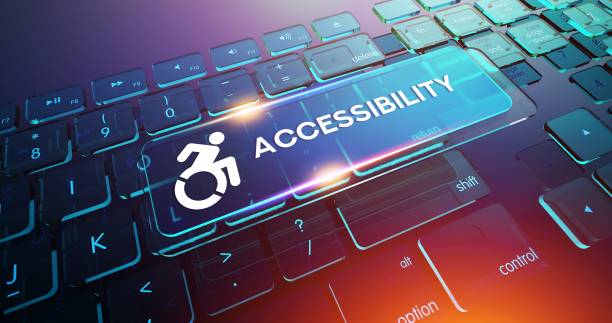 |
| WHAT IS ACCESIBILITY |
Accessibility refers to the design of products, devices, services, or environments for people with disabilities. The goal of accessibility is to enable people with disabilities to participate fully in all aspects of life by removing barriers and providing equal access.
Accessibility can be broken down into several categories, including physical accessibility, visual accessibility, auditory accessibility, and cognitive accessibility. Physical accessibility refers to the design of buildings, sidewalks, and other structures to make them accessible to people with mobility impairments, such as those who use wheelchairs or walkers. Visual accessibility refers to the design of products, services, and environments for people with visual impairments, such as those who are blind or have low vision. Auditory accessibility refers to the design of products, services, and environments for people with hearing impairments, such as those who are deaf or hard of hearing. Cognitive accessibility refers to the design of products, services, and environments for people with cognitive impairments, such as those with autism or dementia.
There are several international standards and guidelines that provide guidance on accessibility, including the Web Content Accessibility Guidelines (WCAG) developed by the World Wide Web Consortium (W3C) and the Americans with Disabilities Act (ADA) in the United States. These guidelines provide specific recommendations for making web content, products, and environments accessible to people with disabilities.
One of the key principles of accessibility is that it should be inclusive and not just for people with disabilities. Accessible design benefits not only people with disabilities but also older adults, children, and anyone else who may have difficulty using a product or service. For example, an accessible website is not only easier to navigate for someone who is blind or visually impaired, but it is also easier to navigate for someone with a cognitive impairment or for someone who is not fluent in the language of the website.
Accessibility is an important consideration in the design and development of products, services, and environments. It is essential for ensuring that everyone can participate fully in society and that no one is left behind.
In recent years, there has been increased focus on digital accessibility, which concerns the accessibility of digital products, services and technologies such as websites, mobile apps, software, and electronic documents. This is because the use of digital technologies is becoming increasingly prevalent in all aspects of life, and it is important to ensure that these technologies are accessible to people with disabilities.
In conclusion, accessibility is the design of products, devices, services, or environments for people with disabilities. The goal is to remove barriers and provide equal access to allow people with disabilities to participate fully in all aspects of life. There are several international standards and guidelines that provide guidance on accessibility, including the Web Content Accessibility Guidelines (WCAG) and the Americans with Disabilities Act (ADA). Accessible design not only benefits people with disabilities but also older adults, children, and anyone else who may have difficulty using a product or service. The focus on digital accessibility is also increasing in recent years.


0 Comments